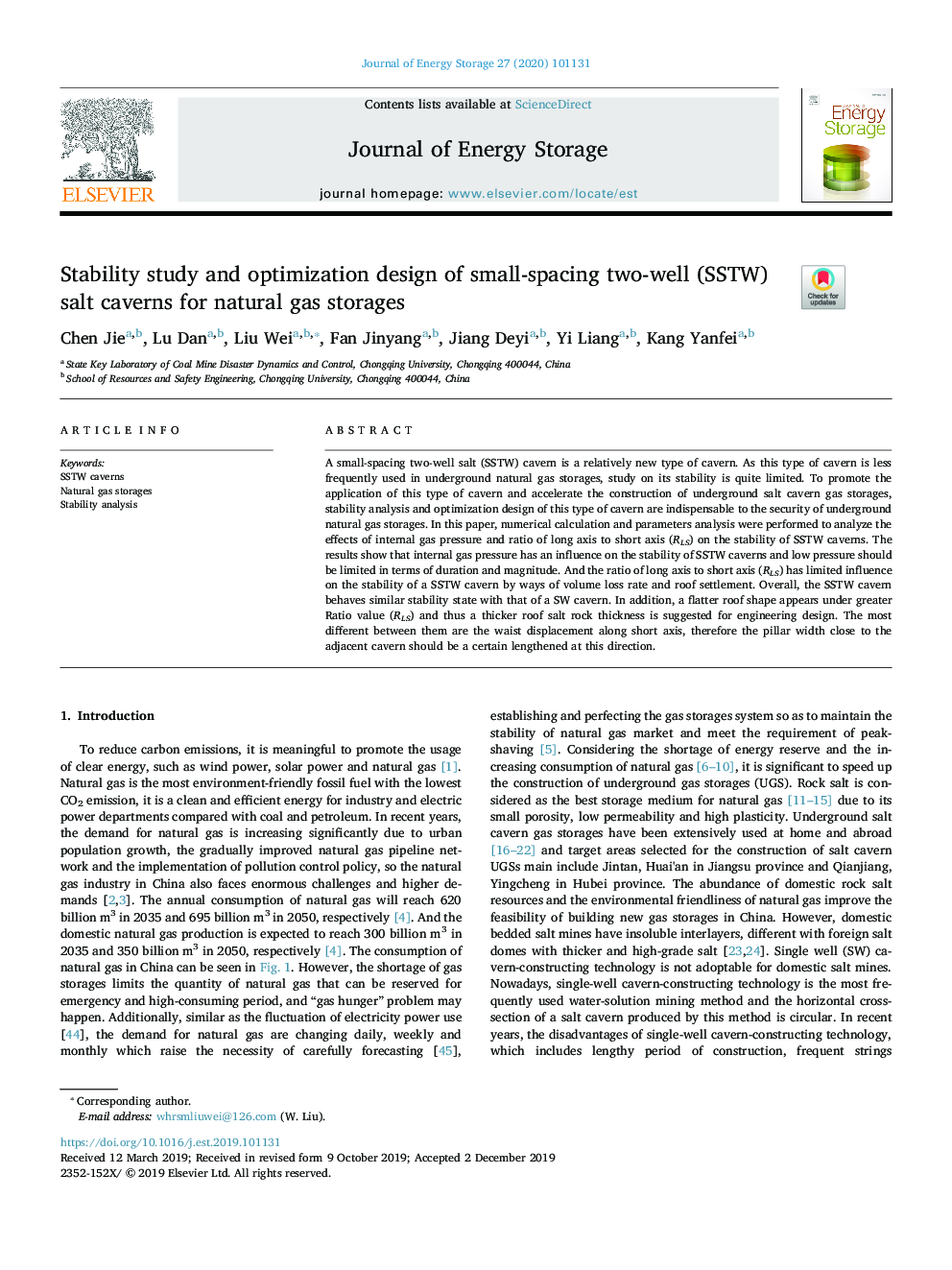| Article ID | Journal | Published Year | Pages | File Type |
|---|---|---|---|---|
| 13469595 | Journal of Energy Storage | 2020 | 11 Pages |
Abstract
A small-spacing two-well salt (SSTW) cavern is a relatively new type of cavern. As this type of cavern is less frequently used in underground natural gas storages, study on its stability is quite limited. To promote the application of this type of cavern and accelerate the construction of underground salt cavern gas storages, stability analysis and optimization design of this type of cavern are indispensable to the security of underground natural gas storages. In this paper, numerical calculation and parameters analysis were performed to analyze the effects of internal gas pressure and ratio of long axis to short axis (RLS) on the stability of SSTW caverns. The results show that internal gas pressure has an influence on the stability of SSTW caverns and low pressure should be limited in terms of duration and magnitude. And the ratio of long axis to short axis (RLS) has limited influence on the stability of a SSTW cavern by ways of volume loss rate and roof settlement. Overall, the SSTW cavern behaves similar stability state with that of a SW cavern. In addition, a flatter roof shape appears under greater Ratio value (RLS) and thus a thicker roof salt rock thickness is suggested for engineering design. The most different between them are the waist displacement along short axis, therefore the pillar width close to the adjacent cavern should be a certain lengthened at this direction.
Keywords
Related Topics
Physical Sciences and Engineering
Energy
Energy (General)
Authors
Chen Jie, Lu Dan, Liu Wei, Fan Jinyang, Jiang Deyi, Yi Liang, Kang Yanfei,
